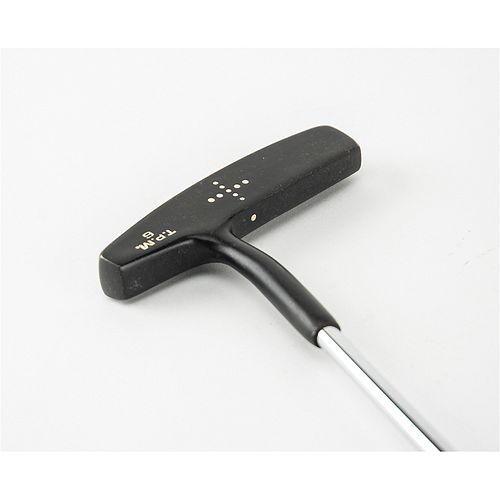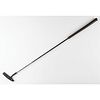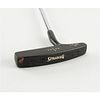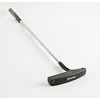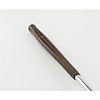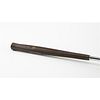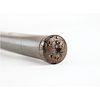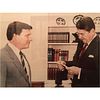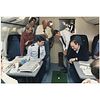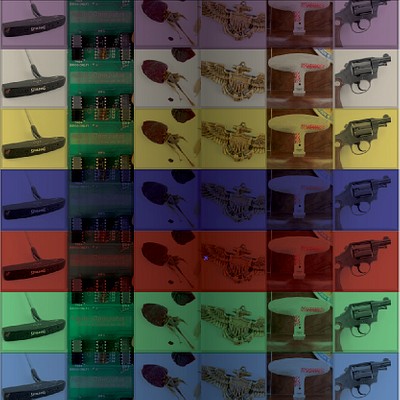Ronald Reagan 'Geneva Summit' Golf Putter Used on Air Force One
Two ways to bid:
- Leave a max absentee bid and the platform will bid on your behalf up to your maximum bid during the live auction.
- Bid live during the auction and your bids will be submitted real-time to the auctioneer.
Bid Increments
| Price | Bid Increment |
|---|---|
| $0 | $5 |
| $50 | $10 |
| $200 | $25 |
| $500 | $50 |
About Auction
Jun 23, 2022
RR Auction support@rrauction.com
- Lot Description
Spalding TPM 6 'Trust, but Verify Open' golf putter used by President Ronald Reagan aboard Air Force One en route to his fabled Cold War-era meeting in Geneva, Switzerland with Soviet General Secretary Mikhail Gorbachev on November 19 and 20, 1985. The putter measures 35.5" in length and features a Golf Pride grip. In fine condition.
Accompanied by a handwritten letter of provenance from Robert 'Bud' McFarlane, Reagan's National Security Advisor from 1983 through 1985, who was on board Air Force One and witnessed Reagan borrow this putter for an impromptu contest. The letter, in full: "This is to confirm that the owner of the putter in President Reagan's storied putting contest while on the way on AF1 to the 1985 Summit in Geneva with President Gorbachev, is Bill Martin, who was serving as Special Assistant to President Reagan and Executive Secretary of the National Security Council. In offering his putter for the event, Bill proposed that the contest be titled the 'Trust but Verify Open.'" Included are two additional photos of Reagan, one of him during the 'Trust, but Verify Open,' with McFarlane pictured in plaid to the left, and another of Reagan with Martin, the original owner of the putter.
The first American-Soviet summit in more than six years, the Geneva Summit also served as the introductory meeting between President Reagan and General Secretary Gorbachev, whose shared ambition of reducing the number of nuclear weapons led to their longtime and well-documented friendship. However, the Geneva Summit was not exactly a roaring success. While both parties aimed for the bilateral reduction of nuclear arms, Reagan's offered collaboration on the Strategic Defense Initiative (SDI)-a proposed nuclear missile defense system codenamed 'Star Wars' by the media-was strongly opposed by Gorbachev (and the Kremlin), who feared the program would lead to an arms race in space.
The General Secretary pressed for continued strategic parity for the two states, 'equal security at lower levels of force,' and tendered to negotiate on offensive weapons reduction if and only if Reagan abandoned SDI. The President refused, reiterated his offer to share the technology with the Soviets, and a stalemate was reached, one that continued throughout the next day of negotiations as well.
Despite the lack of tangible progress on specific nuclear arms measures, the Geneva Summit was a breakthrough point for American-Soviet relations, one largely predicated on the personal connection forged between Gorbachev and Reagan. The groundwork laid in Geneva ultimately led to the landmark Intermediate-Range Nuclear Forces Treaty signed by Reagan and Gorbachev on December 8, 1987, an arms control agreement that, within four years, had eliminated a total of 2,692 short medium-range and intermediate-range missiles.
While Reagan's SDI program was little more than a phantom threat, the possibility of a laser-based satellite defense system pressed the Soviets into action. The development of the Polyus spacecraft, a direct response to SDI, proved an immediate failure, and while its creation did not bankrupt the Soviet Union-as modern myth suggests-Reagan's ambitious sci-fi project coerced the Soviets into an unwinnable arms race, one which exacerbated the downward trajectory of an already ailing Soviet economy.
The Russian proverb 'Trust, but verify' or 'Doveryay, no proveryay,' was taught to Reagan by Suzanne Massie, an American scholar of Russian history who met with and advised the President many times between 1984 and 1987. She explained to him that 'The Russians like to talk in proverbs. It would be nice of you to know a few.' After Reagan used the phrase at the signing of the critical INF Treaty, Gorbachev remarked, 'You repeat that at every meeting.' To which Reagan answered, 'I like it.' - Shipping Info
-
Bidder is liable for shipping and handling and providing accurate information as to shipping or delivery locations and arranging for such. RR Auction is unable to combine purchases from other auctions or affiliates into one package for shipping purposes. Lots won will be shipped in a commercially reasonable time after payment in good funds for the merchandise and the shipping fees are received or credit extended, except when third-party shipment occurs. Bidder agrees that service and handling charges related to shipping items which are not pre-paid may be charged to a credit card on file with RR Auction. Successful international Bidders shall provide written shipping instructions, including specified Customs declarations, to RR Auction for any lots to be delivered outside of the United States. NOTE: Declaration value shall be the item’(s) hammer price and RR Auction shall use the correct harmonized code for the lot. Domestic Bidders on lots designated for third-party shipment must designate the common carrier, accept risk of loss, and prepay shipping costs.
-
- Buyer's Premium



 EUR
EUR CAD
CAD AUD
AUD GBP
GBP MXN
MXN HKD
HKD CNY
CNY MYR
MYR SEK
SEK SGD
SGD CHF
CHF THB
THB